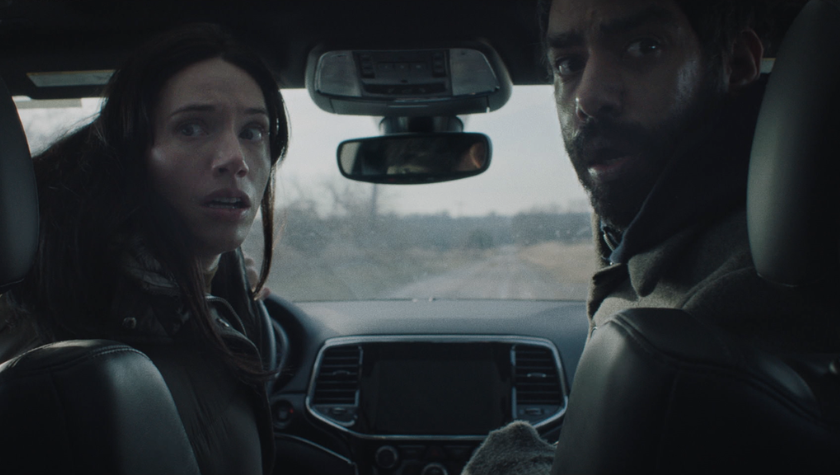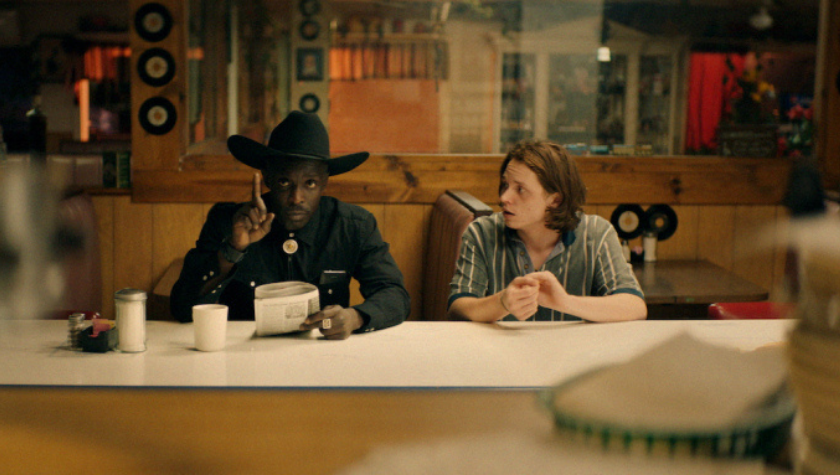Safer at Home' Writer-Director Will Wernick Talks Pandemic Thrillers
March 8, 2021
For months, the pandemic upended moviemaking. Productions were put on hold mid-shoot. Some were indefinitely rescheduled, while others were altogether cancelled. The state of the industry was a giant question mark
— the severity of COVID-19 and the uncertainty of how to safely shoot films for an untraditional (read: stuck at home) audience hung over the industry for months. However, co-writer and director Will Wernick capitalized on the hole in the industry with
Safer at Home, a mostly contained thriller that was written and produced during the height of COVID-19.
In
Safer at Home, the pandemic has continued and it's now 2022. It has caused mass panic and has turned Los Angeles into a police state. With lockdowns enforced by force, a group of friends attend an online Zoom party filled with revelry, drinking and drugs. After the partygoers take ecstasy, the party becomes deadly.
Wernick said that the concept was born out of an idea that he and his co-producer John I
erardi developed together, then he and co-writer
Lia Bozonelis wrote the script.
"The genesis came out of a lot of conversation I was having with family, friends, Lia, and John, just about the strangeness of what we were going through. It was actually written before the lockdown... and then everything we wrote about started happening, which felt very strange," Wernick said.
"We originally tried to imagine how far [a lockdown] could go if the problem wasn’t solved. At the time we thought — like so many other people — we'd be inside for a few weeks, maybe a month. We definitely didn’t think it was going to get as crazy as it did."
Though Wernick and Bozonelis had previously written a feature together in person, they did not write a single word while together for Safer at Home.
"We actually used Final Draft's collaboration feature," Wernick said.
"When we write in person, we actually use the program's feature as well; we sit at the opposite ends of the table and so when writing
Safer at Home required remote writing, it was a seamless transition."
And they wrote the script quickly.
"Just a few weeks writing off an outline. One of the things I like about writing with [Bozonelis] is that we are very different writers and people so we have a great conversational writing style; the banter of our characters comes directly out of that," Wernick said.
"Just a few weeks writing off an outline. One of the things I like about writing with [Bozonelis] is that we are very different writers and people so we have a great conversational writing style; the banter of our characters comes directly out of that," Wernick said.
"The mechanical story was there in the concept, in the outline. The nuances of the characters and the conversations came later when we were writing, but the A to B to C narrative was outlined."
What makes for a great contained thriller, Wernick says, is setting a movie in a location people aren’t used to.
"For something to be cinematic you have to be transported. With Safer at Home, this film takes place in a living room but we were careful with lighting and shots being set up to create something that doesn’t quite look like the reality you’d see through a video camera."
Safer at Home came together very quickly, and Voltage Pictures picked it up for distribution even before the film was completed.
"I left L.A. once I had the outline done and had to return immediately; we'd pitched Voltage around the same time and they immediately financed it and we got going," Wernick said.
"It was a strange time. We shot this in June during the [Black Lives Matter] marches. The first curfew happened on our second shoot day and with the pandemic still going. I think we were the first SAG film to shoot during covid, which was great but it also meant there wasn't really any protocol. So SAG was wary and so was [Directors Guild of America]."
Werner says
Safer at Home was written to be shot remotely.
"Each of the locations had a cinema camera with a box piping the images into Zoom. We used new tech to timecode sync the cameras together over satellite and we shot in 20-page takes… more like a play, with actors seeing it all play out over Zoom."
With the intensity of the script, Wernick says, "it's an ensemble piece until the last act."
"I am less precious with writing now that I'm at my third film. I get less precious with each performance. I find that you get in your own way when you start to be precious. It's important that the script is inspired by a great core idea, but things can always deviate to make a plot point work, and actors have a great idea about how to bring your character to life and what they can deliver."
Safer at Home hits on morality, a, "What would you do?" When asked what Wernick would do in a situation similar to that of his characters, he says, "part of the push-and-pull balance is knowing that these people have been living in a heightened lockdown state for two years. I’d probably be more like Oliver and try to help my friend. But the great thing is nobody really knows how they'll react in this situation."
Written by: Vanessa King
Vanessa King is an NYC-based producer, screenwriter, and professor who has worked in development with top-level industry talent for nearly two decades. Her work as a writer has received numerous awards, having earned her recognition from industry bodies including AMPAS/Oscar’s Nicholl Screenwriting Fellowship (feature) and Sony Worldwide Entertainment’s Emerging Filmmaker Program (TV Series). In 2005, she co-founded the New York Screenwriters Co-Op, New York’s only free-to-the-public screenwriting workshop with over 2000 active members. Vanessa is faculty at Gotham Writer’s Workshop (NYC) and Staffordshire University (UK), where she teaches both television and screenwriting to students, beginner to post-graduate. She recently was Showrunner of the TV pilot “Two Roads”, a concept she co-created and co-wrote for Sony’s VUE Network. Vanessa is passionate about diversity and inclusion within the industry and was a consultant on Final Draft Screenwriting Software’s Diversity and Inclusion product build. She’s a board member of the Diversity List, amplifying top scripts written by female-identifying and BIPOC writers. She is a judge for the Hip Hop Film Festival, The UCLA Graduate Screenwriter’s Showcase and The 24 Hour Film Festival. She was named one of The Huffington Post’s 13 Women To Watch and for three consecutive years, has been named to Vanity Fair’s “Downtown 100”, a list that recognizing New York’s top networkers in the entertainment industry. Originally from Canada, she lives in New York City.



